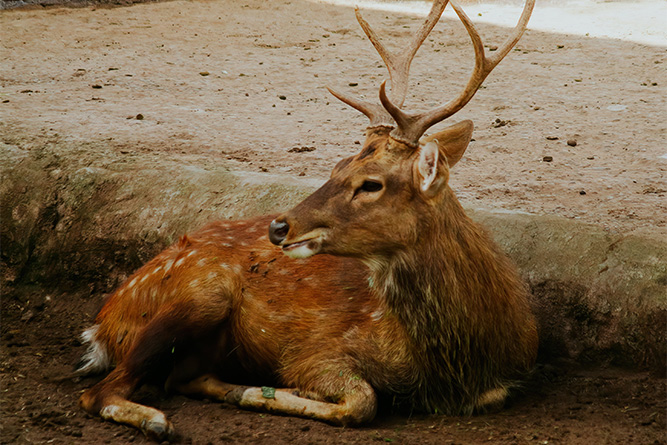Sika deer, also known as “spotted deer,” are captivating creatures that inhabit various regions around the world. These enchanting animals have a unique charm, and there’s much more to them than meets the eye. Let’s explore the intriguing world of Sika deer.
Table of Contents
SPECIES DATA
- Class: Mammalia
- Order: Artiodactyla
- Family: Cervidae
- Scientific Name: Cervus nippon
- Life Span: 10 to 20 years
- Height: Sika deer typically stand between 70 to 120 cm (27.5 to 47 inches) at the shoulder.
- Weight: Adult sika deer weigh around 90 to 150 pounds (40 to 70 kilograms).
Description
Sika deer are known for their petite yet robust stature. They possess a rich chestnut-brown coat with distinctive white spots, which fade as they grow older. These deer exhibit sexual dimorphism, with males (bucks) being larger than females (does). Their graceful bodies are complemented by slender legs and a striking white rump patch.
Appearance
Sika deer are a sight to behold, with elegant antlers adorning the heads of males. Their antlers, unlike those of some other deer species, feature distinct forward curves. Their physical appearance allows them to gracefully navigate their varied habitats.
Behavior
These deer are known for their adaptability and agility. Sika deer are primarily crepuscular, which means they are most active during dawn and dusk. They are social animals, often forming small herds, and their communication includes vocalizations such as barks and whistles.
Habitat
Sika deer are remarkably versatile when it comes to habitat. They can thrive in various ecosystems, from dense forests to open grasslands. Their adaptability has contributed to their widespread distribution.
Diet and Nutrition
Sika deer are herbivores with a diverse diet. They graze on a variety of plants, including grasses, shrubs, and tree foliage. Their feeding habits play a crucial role in shaping their ecosystems.
Mating Habits
During the mating season, also known as the rut, males engage in fierce battles for the attention of females. The victor earns the privilege to mate with multiple does. The gestation period for does is around 7.5 months, after which a single fawn is usually born.
MATING BEHAVIOR
- Reproduction Season: Autumn
- Pregnancy Duration: Approximately 210 days
- Baby Carrying: Females carry their fawns for several weeks.
- Independent Age: Fawns become independent around 6 to 12 months.
- Female Name: Doe
- Male Name: Buck
- Baby Name: Fawn
5 Fun Facts for Kids
- Sika deer are excellent swimmers and are known to cross water bodies with ease.
- They have a distinctive, melodious whistle-like call that adds to their charm.
- Sika deer have a keen sense of smell, which helps them detect predators.
- Their antlers are shed and regrown each year, making them unique among deer.
- These deer are revered in Japanese culture and are considered a symbol of longevity and happiness.
Sika deer, with their captivating appearance and intriguing behavior, continue to capture the hearts of nature enthusiasts and wildlife lovers worldwide.


